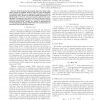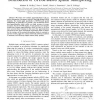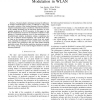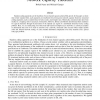1031 search results - page 62 / 207 » The single-serving channel capacity |
VTC
2008
IEEE
15 years 5 months ago
2008
IEEE
— Iteratively decoded near-capacity Space-Time Block Coding (STBC) schemes are designed. Recursive unity-rate codes and IRregular Convolutional Codes (IRCCs) are employed for ass...
ICC
2007
IEEE
15 years 5 months ago
2007
IEEE
Abstract— We derive new analytic approximations to the capacity distribution of frequency-selective Rayleigh fading MIMO channels. The results apply specifically to OFDM-based s...
VTC
2008
IEEE
15 years 5 months ago
2008
IEEE
— Channel models for urban deployments are among the most commonly used in research, standardization, and dimensioning of cellular networks. The time dispersion has ever been an ...
VTC
2007
IEEE
15 years 5 months ago
2007
IEEE
— Channel-adaptive techniques increase the efficiency of wireless communications, as they are efficient in coping with the quality variation of the wireless channels. However, ...
CORR
2008
Springer
14 years 10 months ago
2008
Springer
Random coding arguments are the backbone of most channel capacity achievability proofs. In this paper, we show that in their standard form, such arguments are insufficient for pro...




